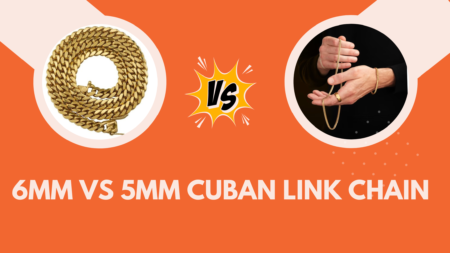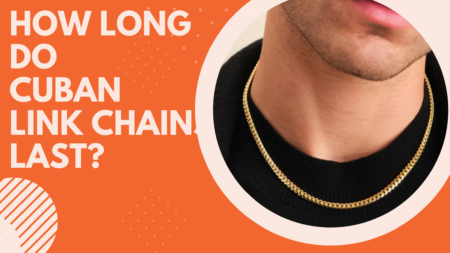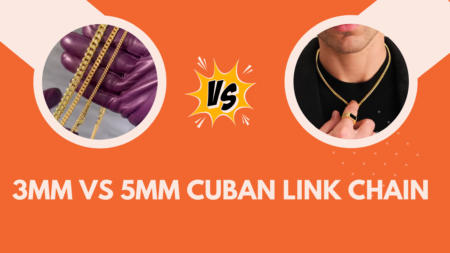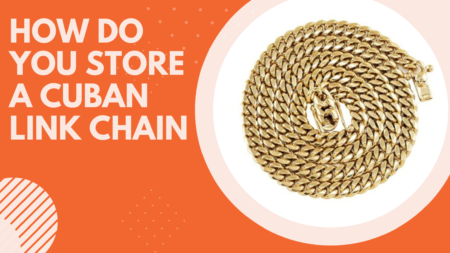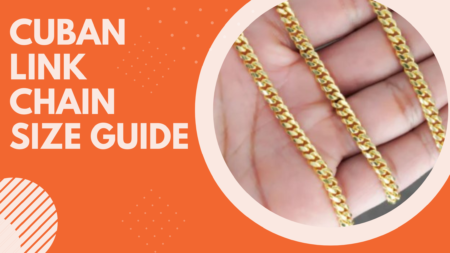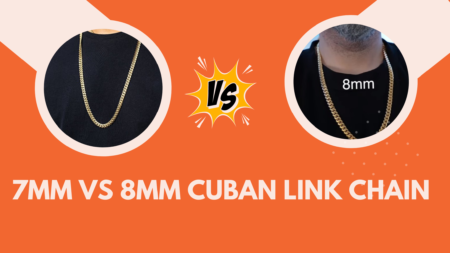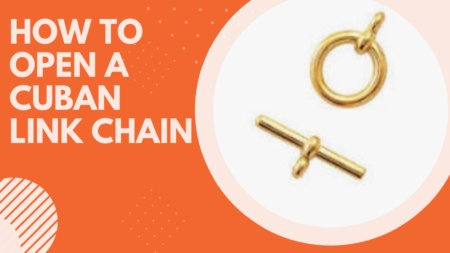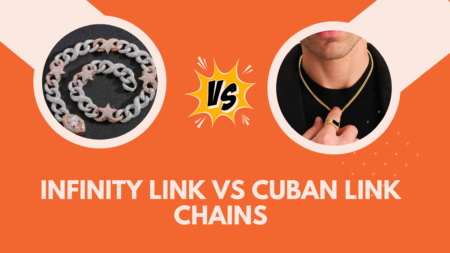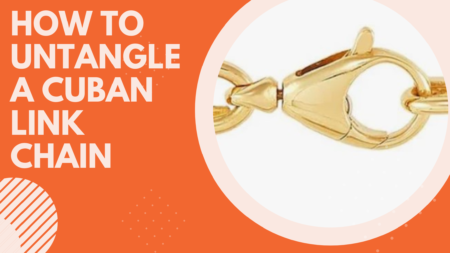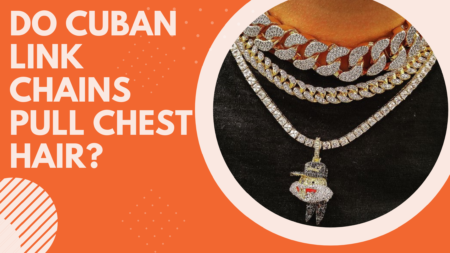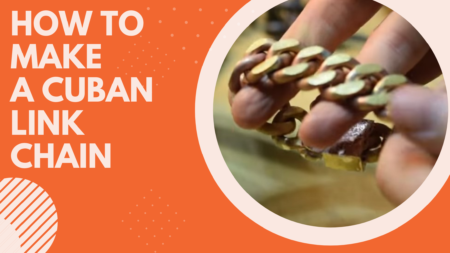Opening a Cuban link chain quickly and safely is important to prevent damage to the jewelry. Typically, Cuban link chains have a clasp mechanism that secures the chain. Here’s a general method to open most Cuban chain clasps:
1. Identify the Clasp Type
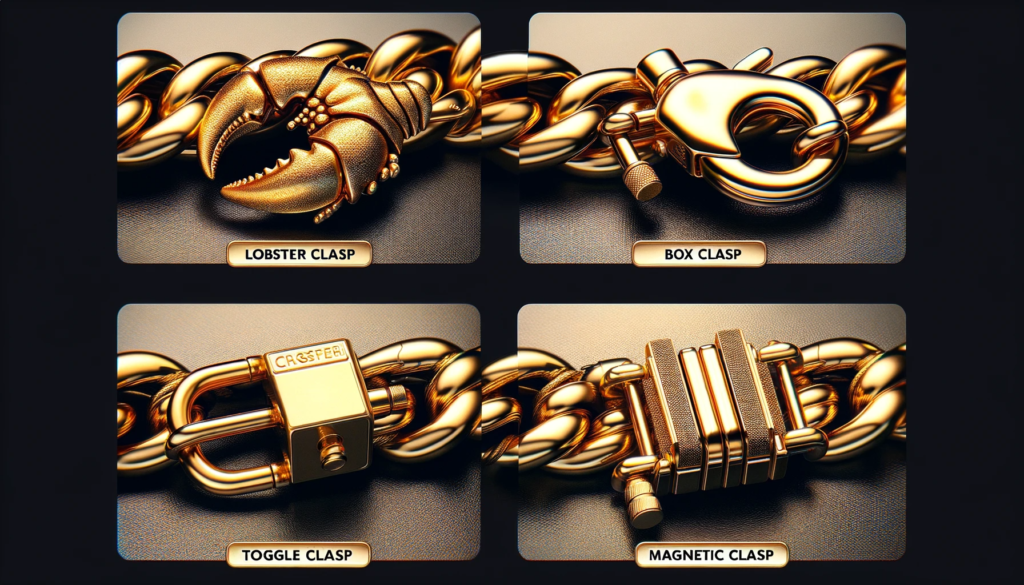
- Lobster Clasp: A commonly used clasp in Cuban link chains, shaped like a lobster claw.
- Box Clasp: A more secure option, consisting of a small box-like structure into which a pin fits.
- Toggle Clasp: Consists of a bar that fits through a ring.
- Magnetic Clasp: Uses magnets to secure the ends together.
2. Hold the Chain Securely
- Grip the Chain: Gently but firmly hold the chain on either side of the clasp. Ensure you are not pulling or applying undue pressure on the chain links.
3. Manipulate the Clasp
- Lobster Clasp: Press the lever on the clasp downwards, which will open the claw. Gently pull the opened part away from the ring or link it’s attached to.
- Box Clasp: Press the small lever or button on the side of the clasp. This will release the pin and allow you to gently pull the two sections of the clasp apart.
- Toggle Clasp: Simply slide the bar out of the ring.
- Magnetic Clasp: Carefully slide the magnets apart instead of pulling them directly away from each other to avoid damaging the clasp.
4. Be Gentle
- Avoid Force: Never pull hard or jerk the chain, as this can cause the links to stretch or break.
- Steady Hands: Ensure your hands are steady and dry to avoid slipping.
5. Additional Tips
- Regular Maintenance: Regularly check the clasp for signs of wear and tear.
- Professional Help: If the clasp seems too tight or difficult to open, consider taking it to a jeweler for professional advice or repair.
6. Closing the Chain
- Reverse the process to close the clasp securely, ensuring it’s properly fastened to prevent the chain from slipping off.
Section 2: Tools and Preparation
When preparing to open a Cuban link chain, while special tools are not a necessity, certain implements can be instrumental, particularly for intricate clasp mechanisms.
Jewelry pliers, also known as chain nose pliers, are essential for their precision grip, allowing for delicate manipulation of smaller clasps.
A magnifying glass, or a jeweler’s loupe, can be invaluable in providing a close-up view, ensuring that every subtle detail is clearly visible, thus aiding in the accurate handling of the chain.

The selection of an appropriate workspace is paramount. opt for a surface that is both soft and uncontaminated. A plush, lint-free cloth or a padded jeweler’s mat can serve as an ideal base, safeguarding against any inadvertent abrasions or impacts to both the chain and your work area. This preparation is critical in preserving the pristine condition of your Cuban link chain.
Section 3: Identifying the Clasp Type
Cuban link chains may feature a variety of clasp types, each with its own unique operational mechanism. The lobster clasp, noted for its spring-actuated arm, is lauded for its security and straightforward usage. Conversely, the box clasp, distinguished by its integrated locking system, offers an uninterrupted aesthetic but necessitates a more meticulous approach to handle.
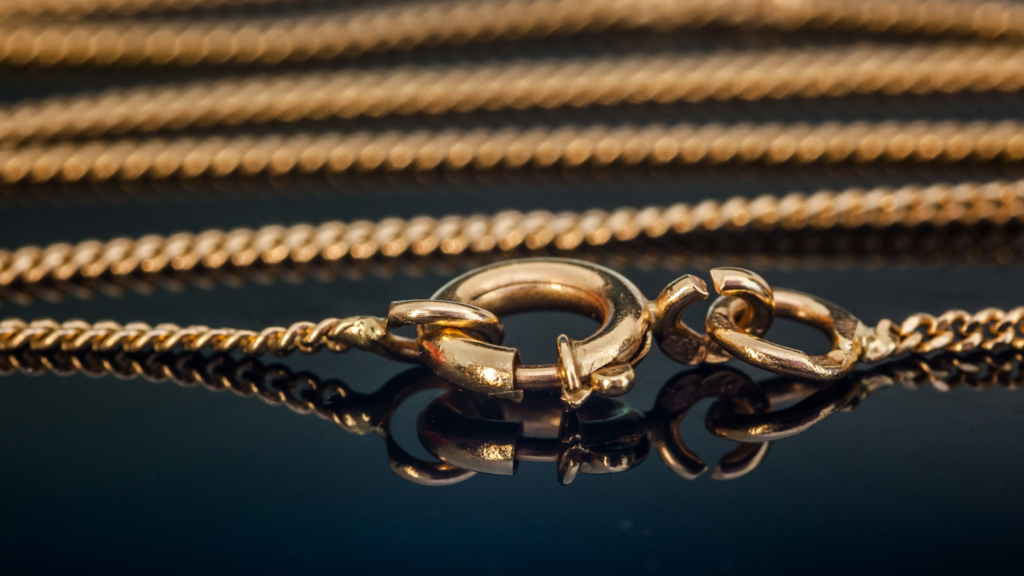
In the examination phase, handle the chain with utmost delicacy to preclude any potential distortion or impairment. Employing visual aids such as high-resolution photographs or magnified images can significantly assist in accurately discerning the clasp type, ensuring correct and safe handling.
Opening Different Types of Cuban Link Chain Clasps
Cuban link chains are not only a statement of style but also a marvel of craftsmanship, particularly evident in their clasp mechanisms. Each type of clasp requires a specific approach to open it correctly and maintain the chain’s integrity. Here’s a guide on how to handle various clasps found in Cuban link chains.
1. Lobster Clasp
The lobster clasp is a highly secure and popular choice. It’s named for its resemblance to a lobster’s claw.
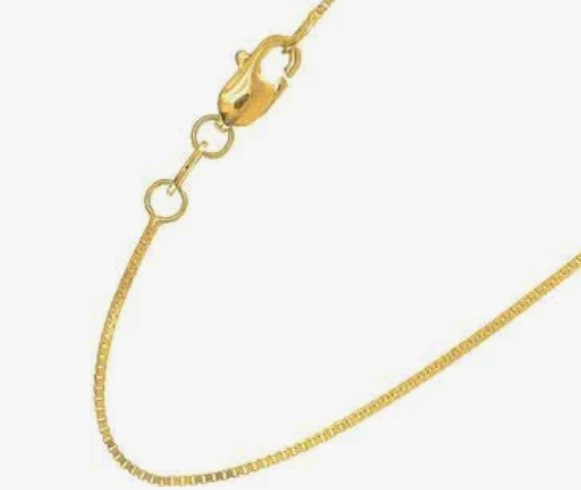
How to Open:
- Locate the lever on the clasp, which is typically a small arm that opens and closes the clasp.
- Gently press down on this lever. This action will open the claw.
- While holding the lever down, carefully separate the claw from the ring or link it’s attached to.
- Release the lever to securely close the clasp after use.
2. Box Clasp
The box clasp offers a sleek, uninterrupted appearance and is often used in more intricate designs.
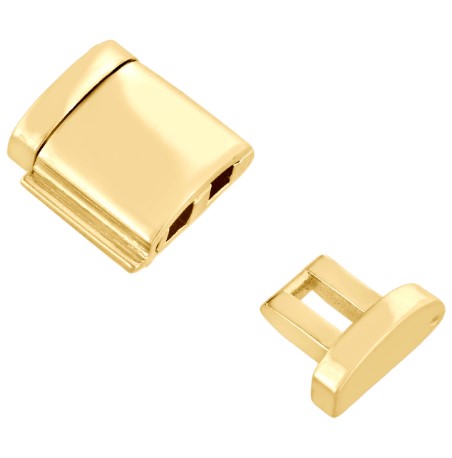
How to Open:
- Find the small button or lever on the side of the clasp. This is usually located on the top or side of the box portion.
- Press down on this button or lever gently. This action releases the latch inside the clasp.
- Once the latch is released, carefully pull the two sides of the clasp apart.
- To close, align the two ends of the clasp and gently push them together until you hear a click, indicating it’s locked.
3. Toggle Clasp
A toggle clasp is a two-piece clasp consisting of a ring and a bar. It’s known for its ease of use and decorative appearance.
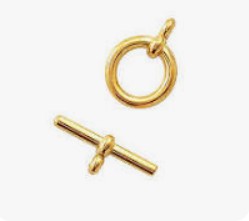
How to Open:
- Hold the ring part of the clasp with one hand.
- With the other hand, grasp the bar and align it parallel to the ring.
- Gently slide the bar through the ring.
- Once the bar is free, separate the ends of the chain.
- To close, reverse the process by sliding the bar back through the ring.
4. Magnetic Clasp
Magnetic clasps use magnets for closure, making them very easy to use, especially for those with limited dexterity.
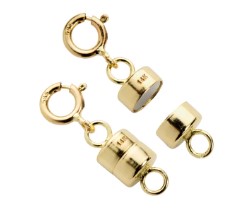
How to Open:
- Hold each side of the clasp between your thumb and forefinger.
- Gently pull the two sides apart. The magnetic force should release smoothly.
- Be careful not to yank the chain, as this can damage the magnets or the chain itself.
5. Slide Lock Clasp
Slide lock clasps are common in multi-strand chains and are known for their secure locking mechanism.
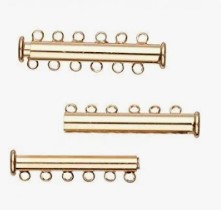
How to Open:
- Locate the small tabs or buttons on the sides of the clasp.
- Gently press these tabs inwards or slide them in the direction indicated, which will unlock the mechanism.
- Carefully pull the two sections of the clasp apart.
- To close, slide the pieces back together until they click into place.
Each type of clasp on a Cuban link chain requires a specific method to open it safely. By understanding these mechanisms and handling them with care, you can ensure the longevity and beauty of your Cuban link chain.
Always remember, gentle and patient handling is key to preserving the integrity and appearance of your precious jewelry.
Opening a Cuban Link Chain Using a Cutter: A Detailed Guide
Opening a Cuban link chain using a cutter is a delicate process that requires precision, caution, and a deep understanding of the jewelry’s craftsmanship.
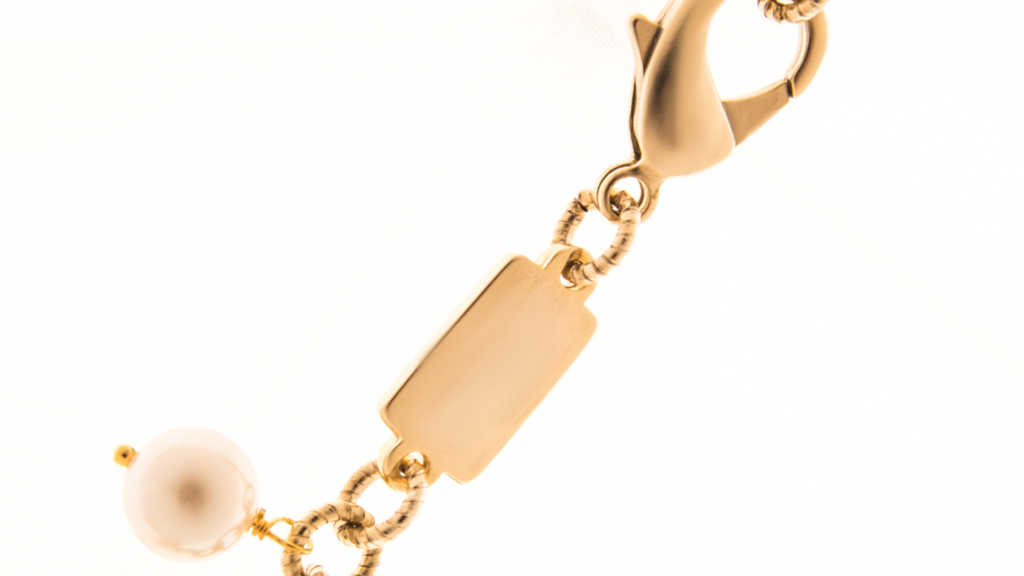
This method is typically a last resort, used only when conventional methods of opening the clasp have failed or when the chain itself is damaged beyond repair. Below is a step-by-step guide for safely cutting open a Cuban link chain.
Safety First
Before proceeding, it’s crucial to acknowledge the risks involved in using a cutter on fine jewelry. This method can permanently alter or damage the chain. Always consider consulting with a professional jeweler before attempting to cut the chain yourself.
Required Tools
- A high-quality jewelry cutter or a pair of small, sharp wire cutters designed for jewelry making.
- A magnifying glass or jeweler’s loupe to accurately view the cutting area.
- A soft, clean surface to work on, like a jeweler’s pad or a soft cloth, to protect the chain and your workspace.
Professional Assistance
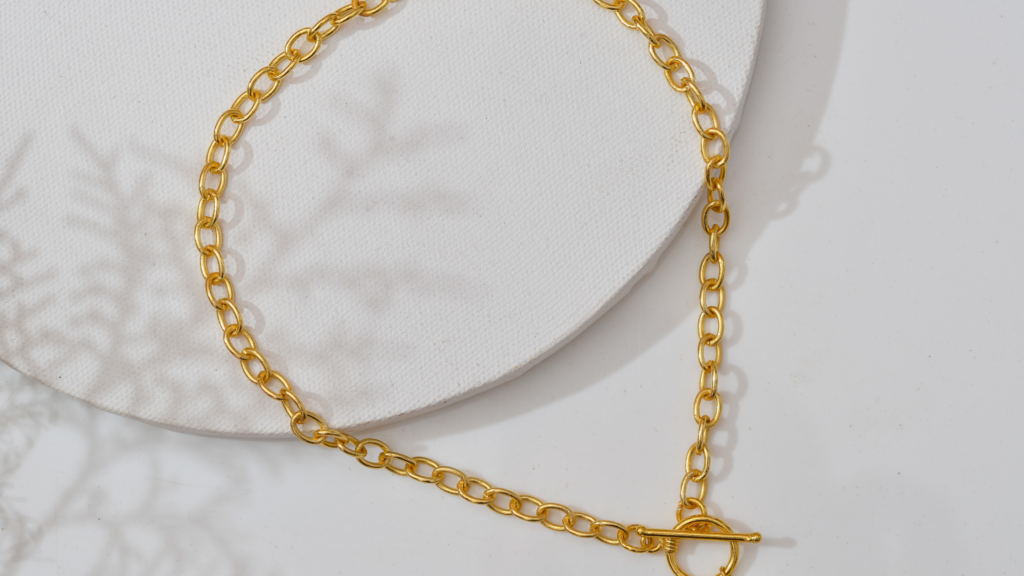
If you’re unsure about cutting the chain yourself or if the chain is of significant value, it’s highly recommended to seek professional help. A skilled jeweler can assess the best course of action, whether it’s repairing the existing clasp, replacing a damaged link, or cutting the chain with precision tools.
Using a cutter to open a Cuban link chain is an intricate task that should be approached with caution. It’s a method reserved for situations where other methods have failed and should be carried out with the utmost care to preserve the integrity of the jewelry. When in doubt, professional guidance is your best course of action to ensure the preservation of your valuable piece.
Troubleshooting Common Issues
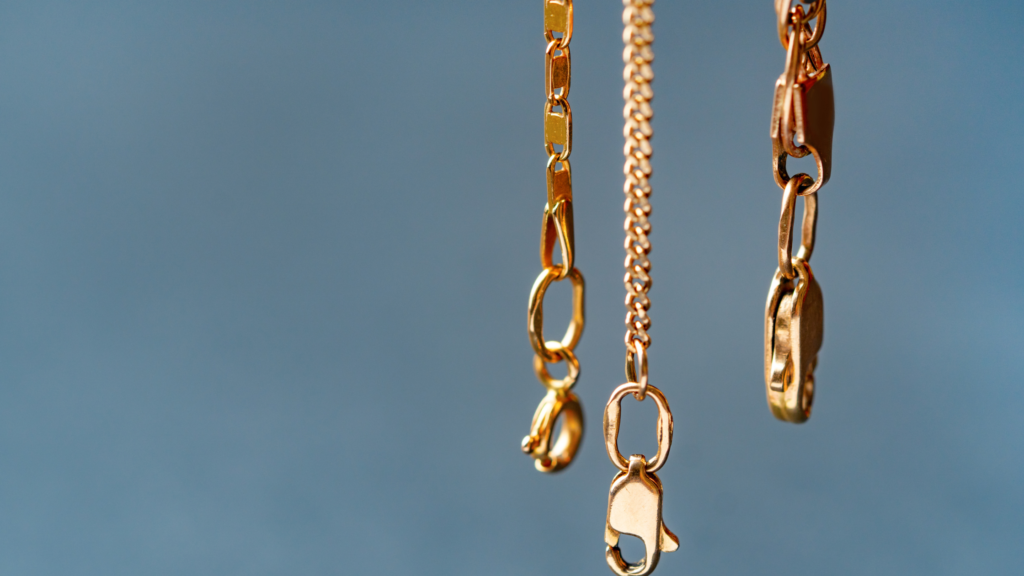
Navigating common challenges such as unyielding clasps or entangled chains requires both patience and finesse. For clasps that exhibit resistance, a minute application of a suitable lubricant can facilitate a smoother opening process. Should the chain become knotted, methodically unravel the tangles using tweezers, ensuring minimal stress is applied to the links.
Persistent complications with clasps or tangles should prompt consultation with a skilled jeweler. This professional intervention is vital to avert any further detriment to your Cuban link chain.
Tips for Trouble-Free Use
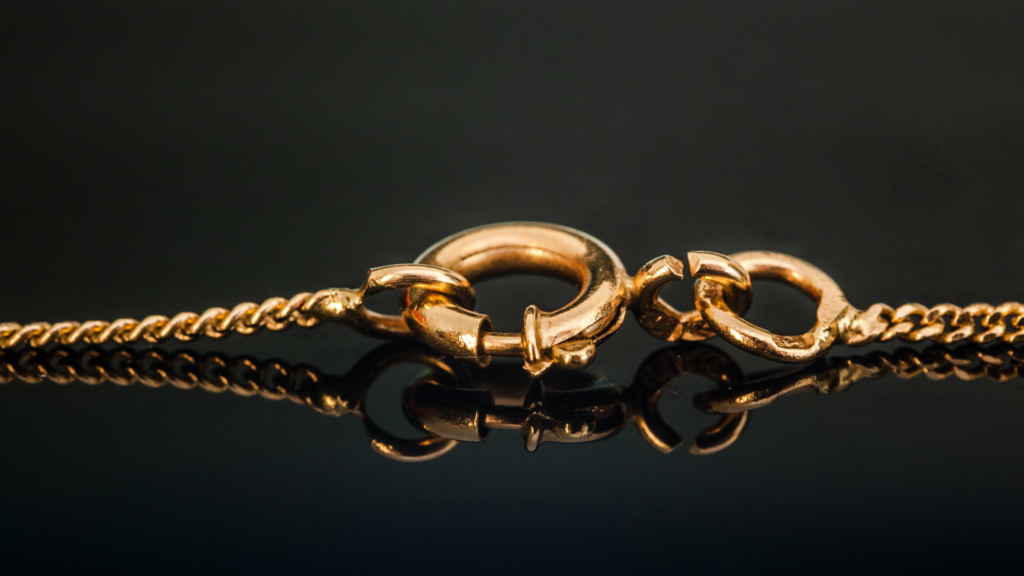
- Regular Maintenance: Just like any other piece of fine jewelry, Cuban link chains require care. Regularly check the clasp for any signs of wear or damage.
- Proper Storage: Store your chain in a clean, dry place. Keep it separate from other jewelry to prevent entanglement or scratches.
- Professional Help: If you’re experiencing persistent issues or if the clasp is damaged, consult a professional jeweler. Never force a clasp open as it could cause irreversible damage.
Conclusion and Further Recommendations
Understanding the nuances of your Cuban link chain, from its clasp mechanism to the correct methods of opening and handling, is crucial in maintaining its elegance and longevity. Patience, careful handling, and the right tools are your allies in ensuring your chain remains a cherished accessory for years to come.
I encourage readers to delve deeper into the world of jewelry maintenance and share their insights or queries. Further exploration into the care, cleaning, and preservation of such exquisite pieces can enhance your appreciation and knowledge of fine jewelry.
FAQs on Opening Cuban Link Chains
What is the fastest way to open a lobster clasp on a Cuban link chain?
To open a lobster clasp quickly, firmly hold the chain near the clasp, press down on the lever with your thumb, detach the chain, and then release the lever. This method is efficient and protects the chain from damage.
Can I open a Cuban link chain if the clasp is stiff or stuck?
Yes, for a stiff or stuck clasp, apply a small amount of lubricant, such as WD-40 or a silicone spray, to ease the opening. If the issue persists, consult a professional jeweler.
Are there specific tools required to open different clasps on Cuban link chains?
No specialized tools are typically needed to open Cuban link chains. However, having jewelry pliers or a magnifying glass can be helpful for intricate clasp mechanisms.
